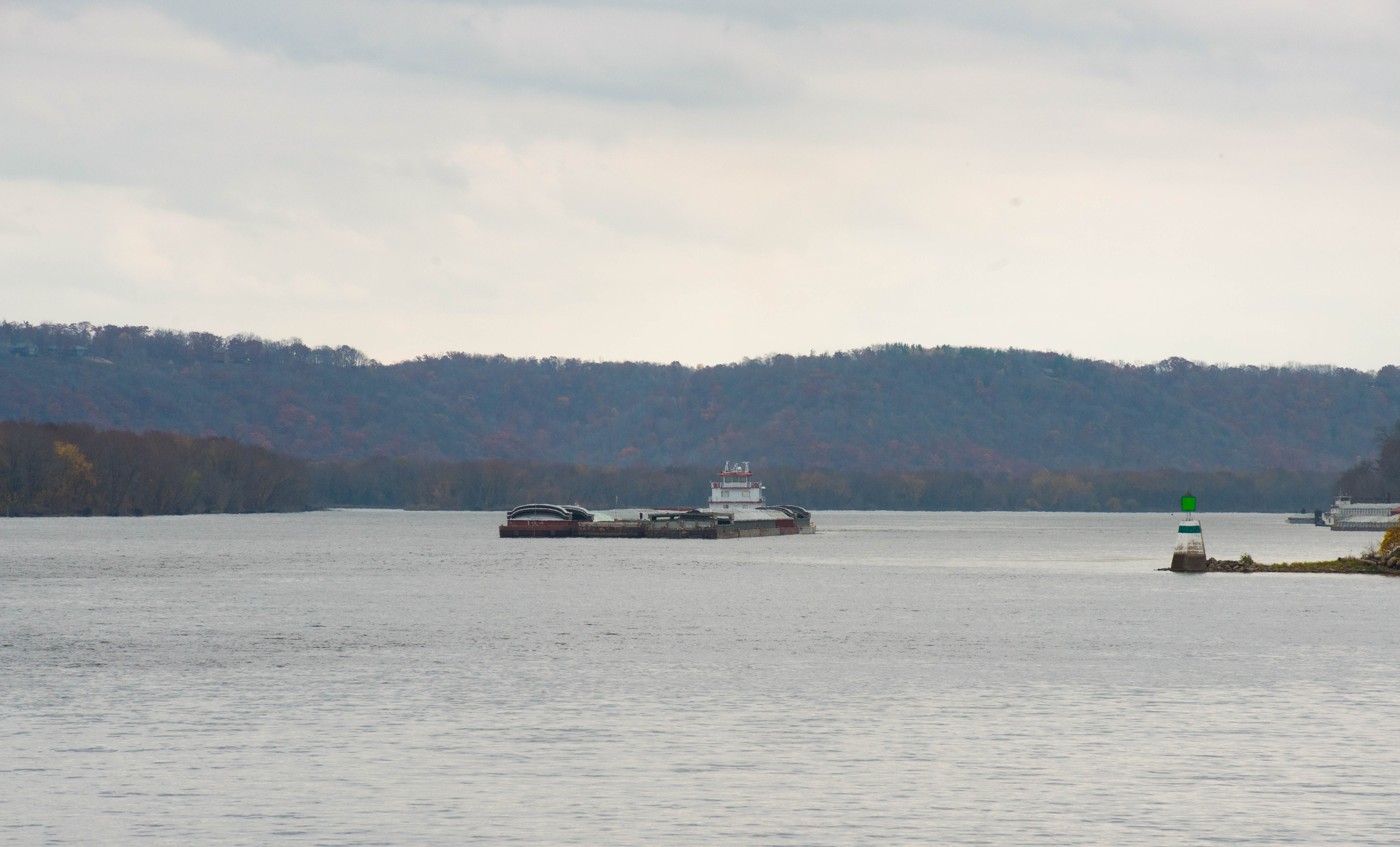
(Photo: Iowa Soybean Association)
Barge traffic resumes on Mississippi River after bridge closure caused shutdown
May 25, 2021
By Mike Steenhoek, Executive Director of the Soy Transportation Coalition
On May 14th, barge traffic was allowed to resume on the Mississippi River near Memphis. At the time of the reopening, there were 62 vessels with a total of 1,058 barges in the queue.
“Based on information provided to us by the Tennessee Department of Transportation, the Coast Guard has determined that transit under the I-40 bridge is safe for maritime traffic,” said Coast Guard Captain Ryan Rhodes, Captain of the Port of Memphis. “We appreciate the cooperative efforts of both the Tennessee and Arkansas Departments of Transportation, as well as maritime port partners, to ensure the safety of our waterway.”
On May 11th, a bridge inspector discovered a “significant fracture” that resulted in a decision to close the Hernando de Soto Bridge that carries Interstate 40 across the Mississippi River between Memphis, Tennessee, and West Memphis, Arkansas. The crack – located on a beam essential to the bridge’s structural integrity – was identified during a routine inspection that occurs every two years.
In addition to the suspension of vehicular traffic across the bridge, the closure resulted in a temporary suspension of barge traffic passing underneath the bridge. Almost every barge loaded with soybeans, corn, or other agricultural commodity along the Upper Mississippi, Ohio, Illinois, or Missouri rivers are destined to Gulf of Mexico export facilities near New Orleans and therefore must pass underneath the I-40 bridge.
For the week ending May 8th, the U.S. Department of Agriculture reported 982,000 short tons of grain and soybeans transited Lock and Dam #27 on the Mississippi River (848,000 short tons) and Olmsted Lock and Dam on the Ohio River (134,000 short tons). 84% (825,000 short tons or 29 million bushels) of that volume was corn. 13% (126,000 short tons or 4.2 million bushels) of that volume was soybeans. Those two locks are good links in the supply chain to monitor since most any volume going through those two locks will need to pass by Memphis to ultimately arrive at Gulf export terminals. They also represent the two main feeders – the Upper Mississippi River and the Ohio River – into the lower portions of the Mississippi River, which includes the Memphis area. If a single barge accommodates approximately 1,500 tons of grain or soybeans, delaying 982,000 short tons of grain and soybeans would amount to 655 barges. Because 80% of U.S. soybeans are exported between the months of September and February, other commodities, particularly corn, shouldered more of the brunt of the barge traffic suspension, but soybeans were clearly impacted as well.
I routinely express how the United States can increasingly be described as a spending nation, not an investing nation. There is a big difference between the two. As we move forward, it is my hope that this situation will further galvanize efforts to produce a comprehensive infrastructure investment strategy that addresses the needs of both urban and rural America.
Back